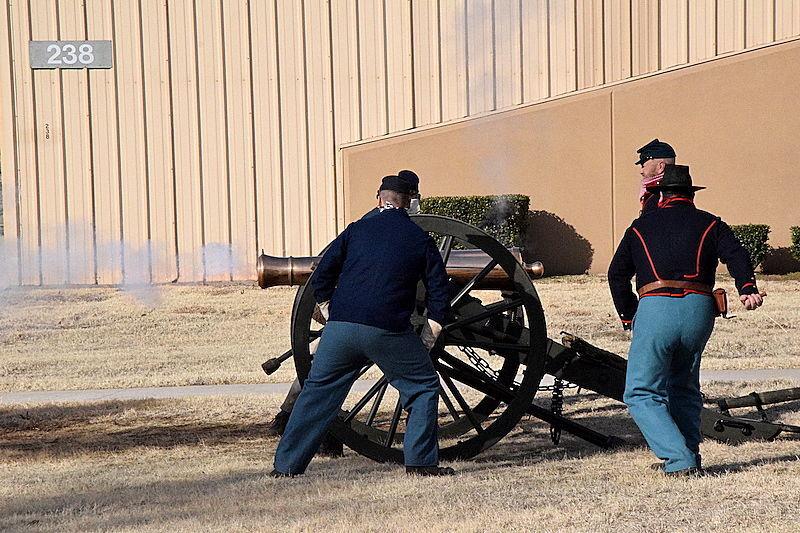
With the ignition of an 1841 six-pounder field gun outside the Fort Sill Artillery Museum Saturday morning, FIRES Center of Excellence Director of Museums Frank Siltman was hoping to ignite others’ passion for learning.
Dressed in circa 1860s-era field artillery uniform, Siltman and his team of volunteers gathered as a field artillery unit outside the museum. Their mission was to live fire a six-pound 1841 field gun for visitors hoping to witness living history. With no shell projected, it was a safety move to make sure the history continued living.
Siltman said it made a perfect opportunity for an enhanced learning experience. It’s all in an effort to serve public education and outreach.
“You think you’re coming for history,” he said, “and you get a little science and technology, too.”
The 1841 six-pounder field gun was used from the Mexican/American War and served the U.S. Army until the middle of the Civil War, Siltman said. He called it one of the hardest working guns in field artillery history.
Firing a six-pound, solid shot projectile or varied shrapnel expelling canister rounds, the field gun’s smooth bore barrel was crafted through casting and proved more dependable than early iron models, Siltman said.
When iron-rifled cannons were refined and introduced during the early 1860s, the bronze beast of the battlefield was retired. According to Siltman, it is what happens when science makes improvements.
“With the iron-rifled cannon, we went from round to elongated shells that are more accurate and could cover more distance,” he said. “The Civil War was the zenith for the bronze, smooth barreled guns.”
Siltman said the change was swift. By the time Gen. George Armstrong Custer brought his 7th Cavalry to Fort Sill in 1869, they were bringing a 12-pounder Howitzer field gun with them.
The field artillery students who tour the museum are able to see the differences in past weaponry and what they’re using. More importantly, Siltman said, is that they are also able to identify the similarities.
By discussing what goes into the logistics of homing in on a target with the weapons, Siltman said it offered a chance to share STEM (science, technology, engineering, and mathematics) applications outside of a classroom.
“The primary mission is education at our training museums; that’s our primary job,” he said.
That mission appeared accomplished with Saturday’s demonstration. Siltman said that’s part of what makes living history moments for visitors so important, especially with young visitors.
“This really allows people to see, touch and feel history,” he said. “It also helps younger people get a better understanding.”
Written by Scott Rains: scott.rains@swoknews.com.
"Demo" - Google News
January 17, 2021 at 02:00PM
https://ift.tt/39E5KJI
Fort Sill Artillery Museum's cannon demo act of living history - The Lawton Constitution
"Demo" - Google News
https://ift.tt/35q1UQ2
https://ift.tt/2Wis8la

No comments:
Post a Comment